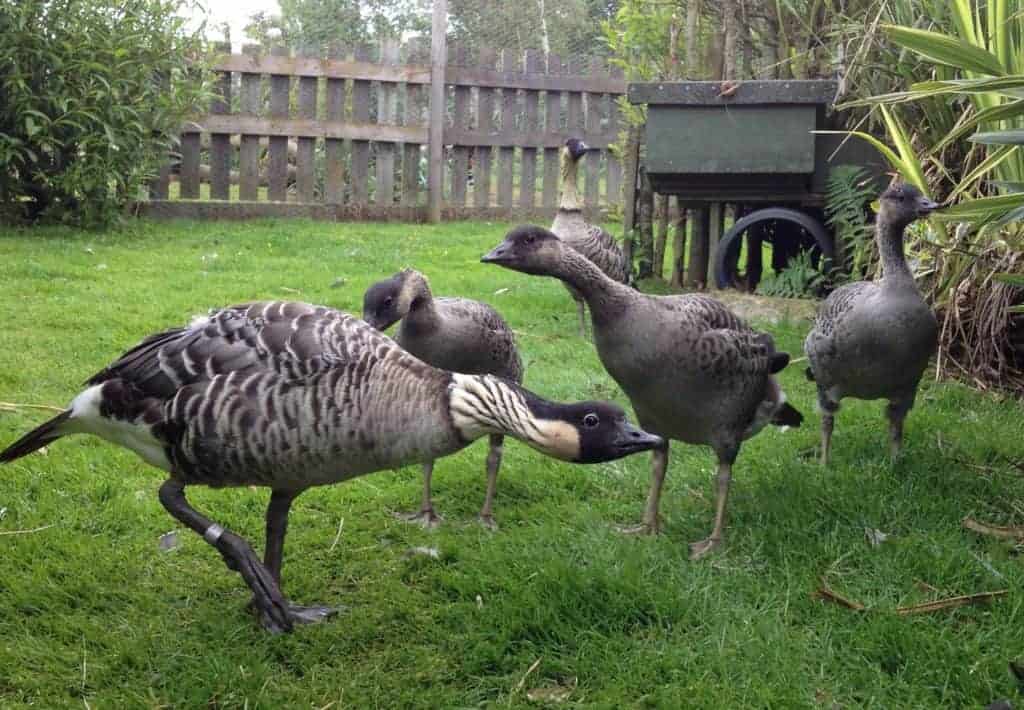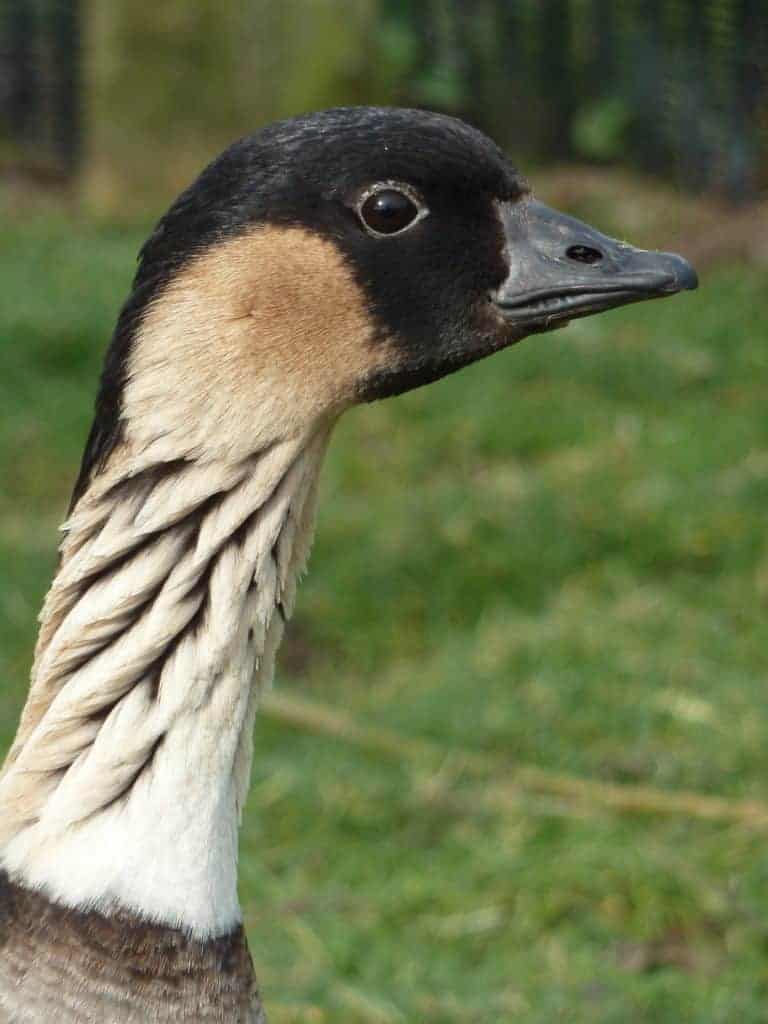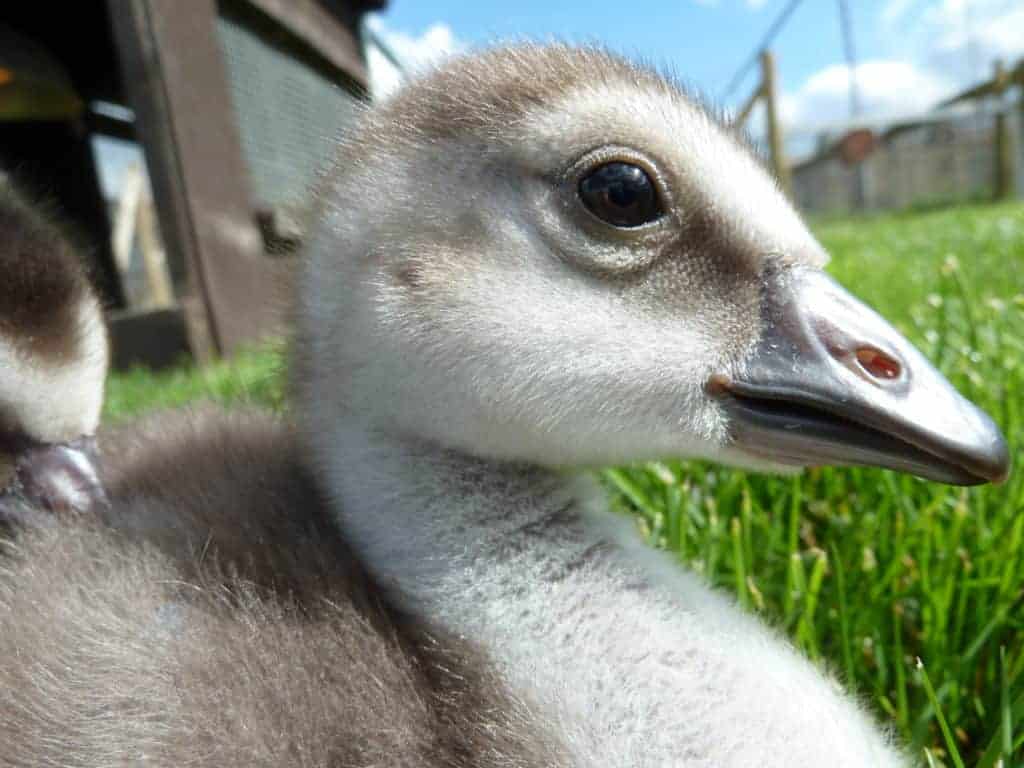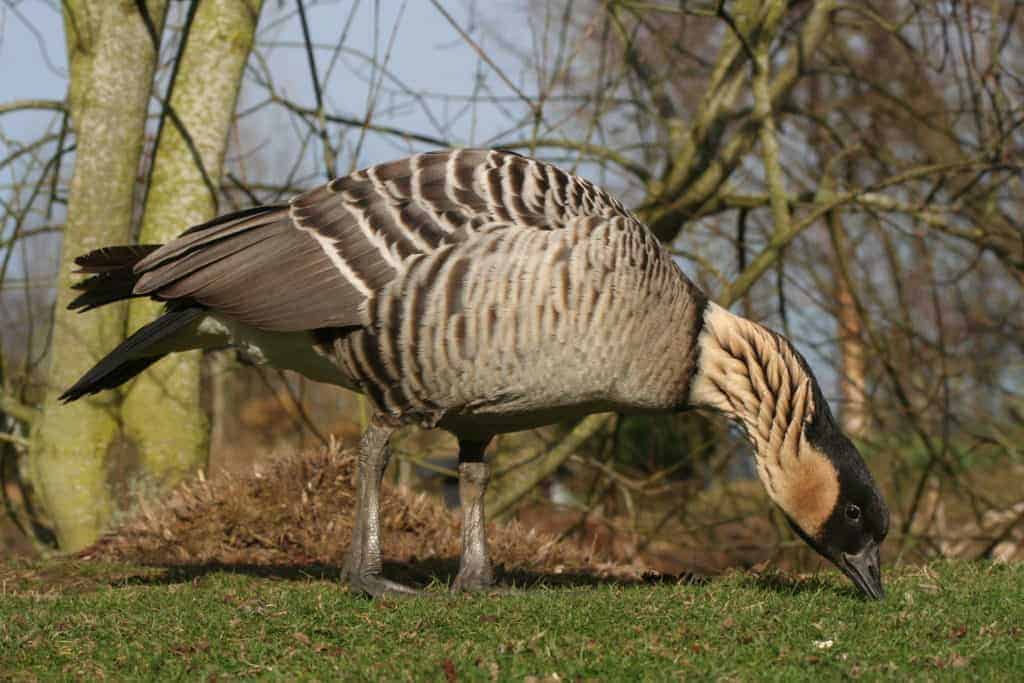Nēnē


Branta sandvicensis
One of the iconic species in terms of conservation, the Nēnē or Hawaiian Goose is a success story, but it is still the world’s rarest goose. In the early 1950s, fewer than 50 birds remained. A captive breeding project was initiated by Sir Peter Scott. Some of the birds were brought to the UK and breeding at Slimbridge was successful. Initial releases into the wild in Hawaii were a failure however, because their natural habitat was not protected from introduced predators. Once that problem was alleviated, successful reintroduction became possible.
Listed in some textbooks as the Hawaiian Goose, this is the official bird of the state of Hawaiʻi, and is endemic to the Hawaiian Islands. It is exclusively found in the wild on the islands of Oahu, Maui, Kauaʻi, Molokai, and Hawaiʻi. It is closely related to the Canada Goose, thought to have evolved from that species half a million years ago when the islands were formed.
Unlike the other true geese, Nēnē are semipalmate – the webs between the toes are not complete. Ideal for rough laval terrain.
For many years the birds in private collections either seemed to be fecund but have nasty temperaments (towards other penmates or their keepers) or had lovely natures but did not breed well. Happily, there are many strains now that combine the best.
Goslings appreciate finely chopped grass on a dish of water in addition to regular waterfowl crumb. As herbivores, Hawaiian Geese graze and browse on available vegetation. They do best when there is plenty of trimmed grass available.


In the breeding season, Nēnē will defend their territory and families fiercely. Wild birds have an unusually long breeding season, from August to April. In the UK, laying will start typically in February. 1-5 large creamy eggs will be incubated by the goose for 29 to 32 days, while the gander stands on guard. Goslings are able to feed on their own but remain with their parents until the following breeding season. If the clutch is lost or removed, the goose may lay again.
The name Nēnē probably has Polynesian origins, the calls do sometimes sound like nay nay – when they aren’t sounding as if they have a terrible headache.
Share this page